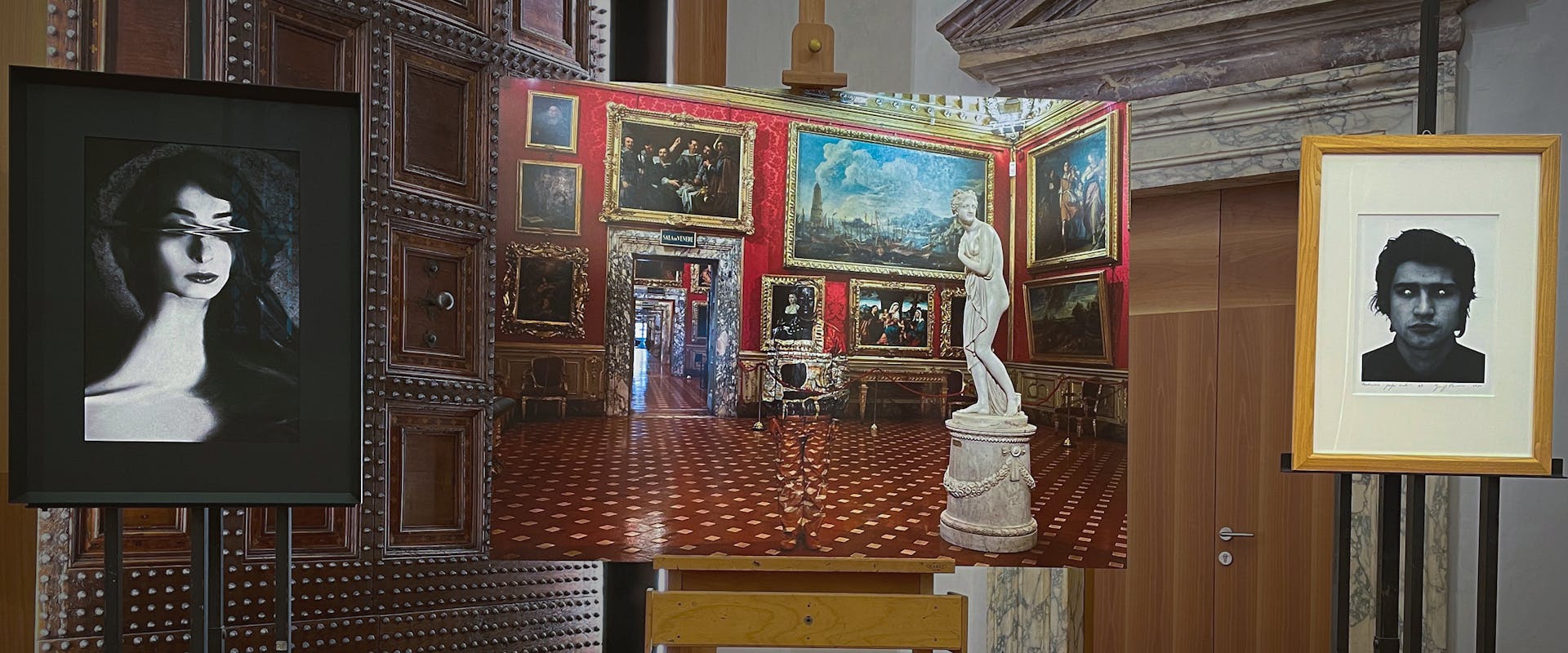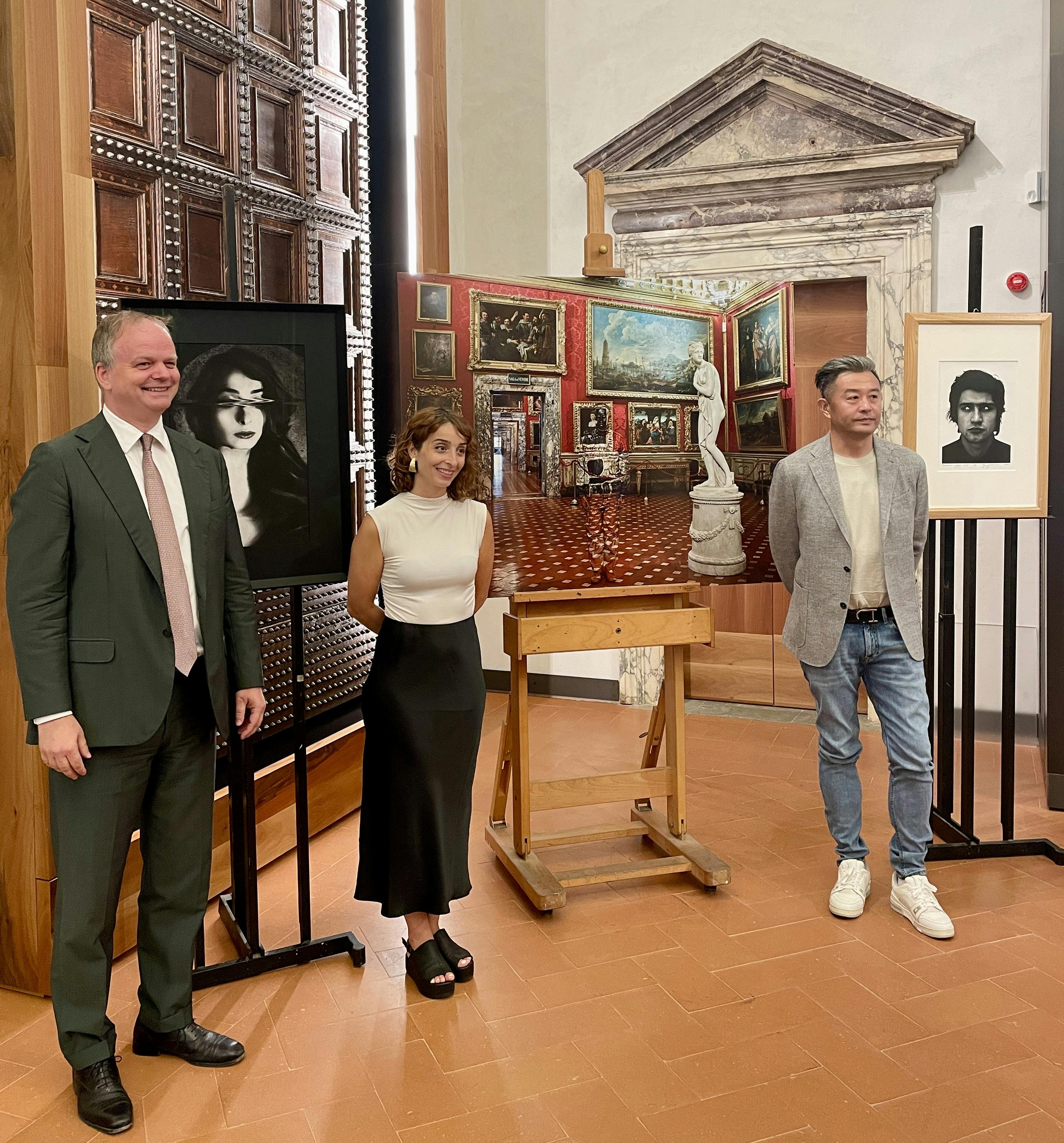The collection of self-portraits at the Uffizi grows with the donation of three shots by contemporary artists
Giuseppe Penone, Ilaria Sagaria and Liu Bolin, among the most important personalities on the current art scene, donated their photographic self-portraits to the Uffizi Galleries
The Uffizi Galleries welcome donations from three of the world's most influential contemporary artists: the Arte Povera poet Giuseppe Penone, the master of camouflage Liu Bolin and the photographer of the feminine Ilaria Sagaria. Three different trends in contemporary art converge in the museum in the form of photographic self-portraits, each with its own particularity: while Sagaria's work, a true photograph, manipulates and distorts the image of the author, those of Penone and Bolin immortalise artistic performances that, in the first case, linger on the relationship between man and nature and, in the second, explore the concept of individuality. The donations enrich the vast collection inaugurated by Leopold de' Medici, which has recently found space in the new rooms of the Uffizi.
Clenched lips, furrowed brow, distended eyebrows: fixed, penetrating eyes, but without pupils, and indeed, covered by a blanket that seems to be steel. Turning his eyes inside out, a fundamental moment in Giuseppe Penone's artistic career, is an introspective journey practised from the outside, which separates the author from his own self and connects him, at the same time, with his sensitivity as a poet: through a pair of mirroring lenses, the artist attempts to return to the observer what his eyes absorb from the outside environment, including the photographer who is documenting it. The lenses, however, make him blind, thus severing the channel between mind and pupil, between man and nature: by eliminating himself from the visual action, Penone reduces himself to a pure body, preventing the mind from re-elaborating what his eyes have perceived, and thus transmitting an unaltered, raw, pure vision. At the same time, it is the artist who guides and controls the entire process: it is he who decides when and where to wear the lenses, how to move, the shots to select. In this sense, Penone casts himself in the role of the visionary: by momentarily abstracting himself from reality, but still holding the reins, Penone manages to penetrate a deeper dimension, not present, but past and future. By voluntarily depriving himself of sight, Penone achieves sensory purity and becomes a medium between the world and the observer. The lens becomes a source of primordial images, free of any interference, which the author transmits like an oracle.
Ilaria Sagaria also chooses not to show her eyes. In Dismorphophobia, the author appears dystopically distorted: her neck is elongated, her gaze sucked in by a graphic modification that swallows up the central part of her face. The accentuated black and white and the invasive graininess of the graphics exasperate the attempt to distort her image; the resulting face is counterfeit, destabilising, and blurs the already blurred boundary between real and digital. In psychiatric circles, dysmorphophobia is an obsessive-compulsive disorder that magnifies the perception of certain features of one's body, often slight or non-existent, generating anxiety and discomfort; in other words, dysmorphophobia is the fear of being ugly. Social networks, the reign of alteration, have the potential to turn every little insecurity into an obsession: in an era in which every photograph is modelled, manipulated and modified to be more appealing, Ilaria Sagaria - author of the exhibition 'Lo sfregio' (The Scarring), exhibited at the Uffizi in 2021 - once again investigates the relationship with one's own image, and therefore, with one's own identity. Dismorphophobia stems from the need to highlight the effects that the distorted perception of one's own image can generate: the uncontrolled use of filters to eliminate any defect distances us from our reality, from the truth of ourselves. The risk is that of being dragged into the vortex that has engulfed the eyes of the protagonist of the self-timer, of not recognising ourselves to such an extent that we no longer want to look at ourselves.
If Ilaria Sagaria alters the perception of herself, Liu Bolin totally erases her own: through a synthesis of painting, photography and performance, the works of the 'chameleon' of contemporary art challenge visual perception itself, confusing the mind of the observer and bewitching his gaze. After blending in with the surrounding background thanks to a meticulous process of total body painting, Liu Bolin, remaining motionless like a living sculpture, allows himself to be photographed in iconic, emblematic and even disturbing places, dissolving into the work itself and at the same time giving body to the meaning of the depicted environment. In investigating the category 'museum', the artist could only turn to the Uffizi Galleries: for the project Hiding in Florence, Liu Bolin has renounced his identity to embrace that of an ordinary visitor, choosing to disappear in the Sala della Niobe, to blend in among the sculptures of the Sala di Venere in the Galleria Palatina of Palazzo Pitti and to become part of the Sala Bianca. In his attempt to identify himself with the public, the 'invisible man' has, inevitably, found a direct line that unites him with the great masters of the 16th century.

